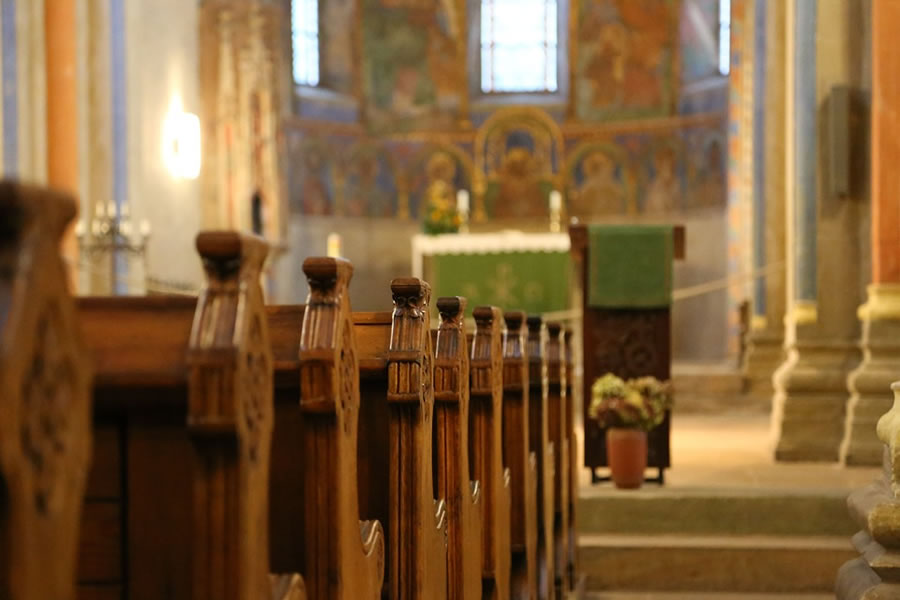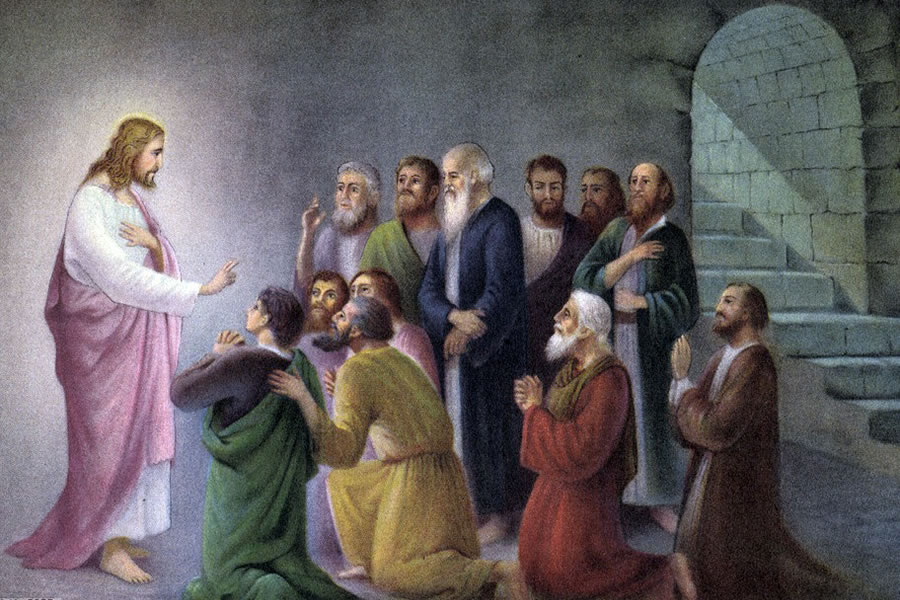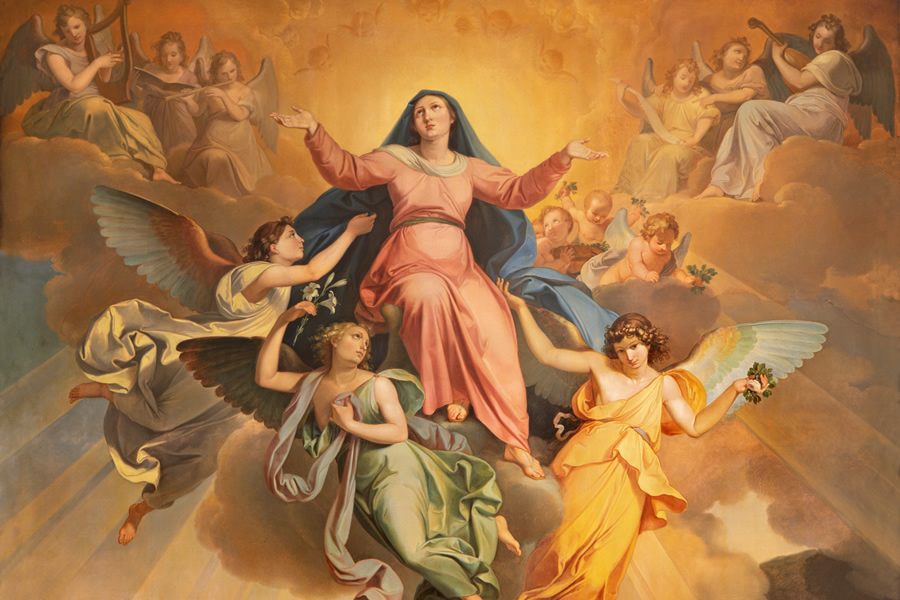Corpus Christi Blog

The Responsibilities of Stewards
10-31-2021Weekly ReflectionKathleen Foley, Director of Mission AdvancementRemember Joseph in the Old Testament? He was the most loved of Jacob’s twelve sons. Some of you might remember the once-popular musical from the ‘70’s, Joseph and the Amazing Technicolor Dreamcoat. No? Regardless, Joseph did have a great coat that Jacob made just to show how much he favored Joseph. Now imagine how this made his eleven brothers feel! Yes, they were quite jealous of that one-of-a-kind, handmade, stand-out coat, but even more, they were envious of their father’s love and favor so openly bestowed upon Joseph.
READ MORE
The Joy of Giving
10-24-2021Weekly ReflectionKathleen Foley, Director of Mission AdvancementThe great thing about gifts is that, more often than not, giving and receiving them are occasions of joy and happiness. The only time I have ever truly surprised my husband – to the point of him being speechless – was more than twenty years ago. We had been together for about a year, and I surprised him with tickets to an event. I felt overjoyed to be able to give that gift to him!
READ MORE
The Domestic Church
10-17-2021Weekly ReflectionJen Arnold, M.A. in Theology and CatecheticsWhile the pro-life movement typically focuses on the physical life of the human body, as Catholics, our understanding of life continues on to our eternal life and the desire for it to be in heaven with the triune God. However, getting to heaven is not something to be left to chance or an over-reliance on God’s abundant mercy. Rather, we must be intentional about how we live our lives as Christians -- moving toward virtue and away from sin. Similarly, we must be intentional with how we raise our children in the Faith so that we will help prepare them for their own eternal life. Children hold a very special place in the heart of the Church and, as a pro-life religion, we must raise them up with the care their souls deserve.
READ MORE
Euthanasia and Suicide
10-10-2021Weekly ReflectionJen Arnold, M.A. in Theology and CatecheticsContent Warning: This piece discusses suicide — a sensitive topic that may be traumatic for some people. If you or someone you know is experiencing suicidal thoughts, please contact The National Suicide Prevention Lifeline at 800-273-TALK (8255) or message the Crisis Text Line at 741741. If you are grieving the loss of someone who has died by suicide, know that you are not alone and please have hope and trust in God’s mercy. For a directory of resources and support, visit bit.ly/afterasuicide. For online support groups, check out: Loving Outreach to Survivors of Suicide (LOSS) based out of the Catholic Charities of the Archdiocese of Chicago.
READ MORE
Abortion
10-03-2021Weekly ReflectionJen Arnold, M.A. in Theology and CatecheticsEditor’s Note: This piece discusses abortion — a topic that can bring up many emotions for people. No matter what your story is, or where you are in your journey, we want you to know that God loves you and the Church loves you. If you are dealing with anger, sadness, shame, fear— or are hurting in any way — resulting from a connection to abortion, Jesus desires healing, wholeness, and restoration for you. If you or someone you know needs help finding healing and hope after an abortion, please contact Rachel’s Vineyard at 877-467-3463 or the National Hotline for Abortion Recovery at 866-482-5433. Additional information is available at rachelsvineyard.org.
“I would like to say a special word to women who have had an abortion. The Church is aware of the many factors which may have influenced your decision, and she does not doubt that in many cases it was a painful and even shattering decision. The wound in your heart may not yet have healed...do not give in to discouragement and do not lose hope.” (EVANGELIUM VITAE, 99 - St. John Paul II)
READ MORERenovation Update #5
09-30-2021RenovationWhen: Early 2022!
Progress continues to be made since our last update and we are happy to share that we are on track to begin construction in January! The renovation will start with the complete remodel and expansion of the kitchen. We met earlier this week with our new contractor, KGM Builders, Inc., and are very excited to have them working with us on this project. Our kitchen drawings are being reviewed by the City of Phoenix and we are currently working with the architect and contractor on finalizing the other details of the project (flooring, bathrooms, doors, lighting, walls, and a few other various items). As always, please pray for this project and for all those involved in ensuring its success. Thank you!

Care of the Body
09-26-2021Weekly ReflectionJen Arnold, M.A. in Theology and CatecheticsPerhaps you have heard the following quote, often attributed, potentially inaccurately, to C.S. Lewis: “You do not have a soul. You are a soul. You have a body.” Regardless of where this concept came from, it is not necessarily original in substance, but it is worth developing a deeper understanding of what it means.
READ MORE
Priest, Prophet, and King
09-19-2021Weekly ReflectionJen Arnold, M.A. in Theology and CatecheticsJesus Christ, the Incarnate Word of God, had a three-fold office and mission during His time with us on Earth. He was priest, prophet, and king. However, He did not simply occupy these roles like those before Him. We have plenty of examples of great priests, prophets, and kings throughout scripture and salvation history. Rather, He came to fulfill each of those roles in its perfection so that the Kingdom of Heaven might be made manifest on Earth.
READ MORE
Sin
09-12-2021Weekly ReflectionJen Arnold, M.A. in Theology and CatecheticsThis week we’re going to closely examine sin – its definition and the different types. Often times, those outside of the Catholic Church misunderstand the Catholic approach to sin. You’ve probably heard the phrase “Catholic guilt” as a pseudo-explanation for our emphasis on our sins as if to keep us down, wallowing in our own muck, and avoiding the fun in life. The truth is, the Catholic approach to sin provides an honest and vulnerable look at the reality of human nature, while providing hope in mercy and forgiveness and motivation to do better. If heaven is truly our goal, we cannot achieve it without a continual examination of our relationships with God and our neighbors.
READ MORE
Anger
09-05-2021Weekly ReflectionJen Arnold, M.A. in Theology and CatecheticsToday we will engage in an examination of anger. We will determine when it is or is not a sin and learn what we might do about it when it starts to consume us. This topic seemed timely to me since, throughout the last few years, many of us have experienced anger at various people and situations, whether general or specific. We live in a society that is currently polarized on everything – politics, the handling of COVID, the closure of our churches, the media, and whether or not we are being charitable to our neighbor. In our climate today, there seems to be a reflex to be angry toward those with whom we disagree, rather than a desire to seek understanding through civil dialog. In addition to all these external factors, we have all had to deal with our own individual situations that stir up anger, whether it be with family members, friends, coworkers, and perhaps even our priests, bishops, and others within the Church. If you have not experienced some level of anger in the last couple of years, then you are certainly on a path to heroic virtue and should keep up the good work. However, I suspect the vast majority of us have experienced at least some struggle with anger in our recent past.
READ MORE
St. Justin Martyr
08-29-2021Weekly ReflectionJen Arnold, M.A. in Theology and CatecheticsBy now, you know that when you attend Mass on Sunday you are participating as a member of the Body of Christ, which consists of all Christians – past, present, and future. We know that when we participate in the Eucharist, we are doing so in union with our fellow Catholics all over the world. We also stand and kneel at the foot of the same cross with all those in Purgatory and Heaven. However, when you attend Mass, how often do you consider your connection to the earliest members of the Church and understand that you are practicing something that has been exercised for thousands of years?
READ MORE
Peace
08-22-2021Weekly ReflectionJen Arnold, M.A. in Theology and CatecheticsPeace, or a lack thereof, seems to be a prevalent theme in our country and world today. We are polarized on every issue we are facing as a society and are well aware of the spiritual forces seeking to promote discord and animosity among us. We constantly pray for peace: peace in our families, peace in our Church, peace in our country, and peace in the world. However, it is not enough to simply pray for peace, rather, we must actively pursue it by our own actions.
READ MORE
The Assumption
08-15-2021Weekly ReflectionJen Arnold, M.A. in Theology and CatecheticsToday, we celebrate the feast of the Assumption of the Blessed Virgin Mary. In this feast, we recognize the Church teaching that after her earthly life was over, Mary was assumed, body and soul, into heaven by virtue of her sinless nature. In September and October of 2020, I wrote a 5-part series on the Marian dogmas and doctrines taught by the Magisterium, with the Assumption published on September 27, 2020. If you were away from the parish at that time, or would like to refresh your memory, I invite you to visit our parish website to find and read it.
READ MORE
But Deliver Us from Evil
08-08-2021Weekly ReflectionJen Arnold, M.A. in Theology and CatecheticsToday, we reach the seventh and final petition of the Lord’s Prayer – “but deliver us from evil.” It makes sense that the prayer would end on this note as it is one of the most important, if not the most important thing we could be asking for. The Church teaches us that, in this particular case, “evil is not an abstraction, but refers to a person, Satan, the Evil One, the angel who opposes God. The devil is the one who ‘throws himself across’ God’s plan and his work of salvation accomplished in Christ” (CCC #2851). When we are asking to be delivered from evil, we are asking specifically to be protected from Satan’s harm, as his very goal is to prevent us from obtaining our ultimate salvation so that we might suffer eternally as he does. What could be more important?
READ MORE
And Lead Us not into Temptation
08-01-2021Weekly ReflectionJen Arnold, M.A. in Theology and CatecheticsThis week we find ourselves with perhaps the most controversial petition of the Lord’s Prayer – “lead us not into temptation.” Over the years, and even very recently, there has been much discussion over whether God would actually lead His people into situations that would cause them to sin. Why would a good and loving God do such a thing? Surely, He would not lead us down a path of sin and failure. What we need here in this dialogue is a proper understanding of temptation and virtue and the good that worldly temptation can provide for our spiritual health.
READ MORE